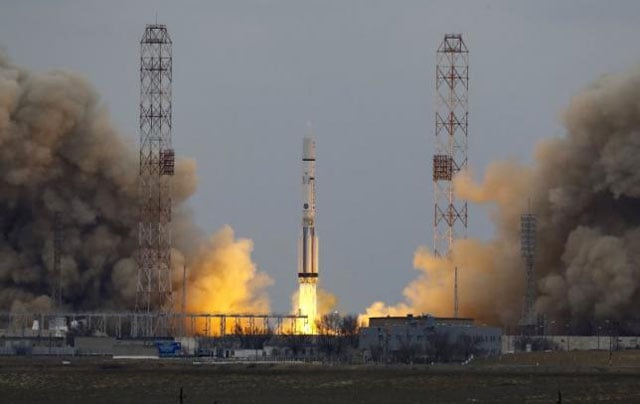
The craft, part of the ExoMars programme, blasted off from the Baikonur spaceport in Kazakhstan on board a Proton rocket at 5:31 A.M. EDT (0931 GMT) on Monday, starting a seven-month journey through space.
Spacecraft to seek life on Mars in European-led mission
It will carry an atmospheric probe that will study trace gases, such as methane, around Mars as well as a lander that will test technologies needed for a rover due to follow in 2018.
US space agency NASA’s Mars rover Curiosity in late 2014 found spurts of methane gas in the planet’s atmosphere, a chemical that on Earth is strongly tied to life.
Scientists believe the methane could stem from micro-organisms, called methanogenes, that either became extinct millions of years ago and left gas frozen below the planet’s surface, or that some methane-producing organisms still survive.
Mars robot launch now scheduled for May 2018: NASA
“Proving that life exists or has existed on Mars would show that Earth is not unique in terms of having life on it,” Rolf de Groot, head of the European Space Agency’s (ESA) Robotic Exploration Coordination Office, told Reuters.
“That would make it much more likely that there are other places in the universe that also have life,” he added.



1732623521-0/bitcoin-(1)1732623521-0-165x106.webp)

1732618327-2/Untitled-design-(7)1732618327-2-270x192.webp)











COMMENTS (1)
Comments are moderated and generally will be posted if they are on-topic and not abusive.
For more information, please see our Comments FAQ